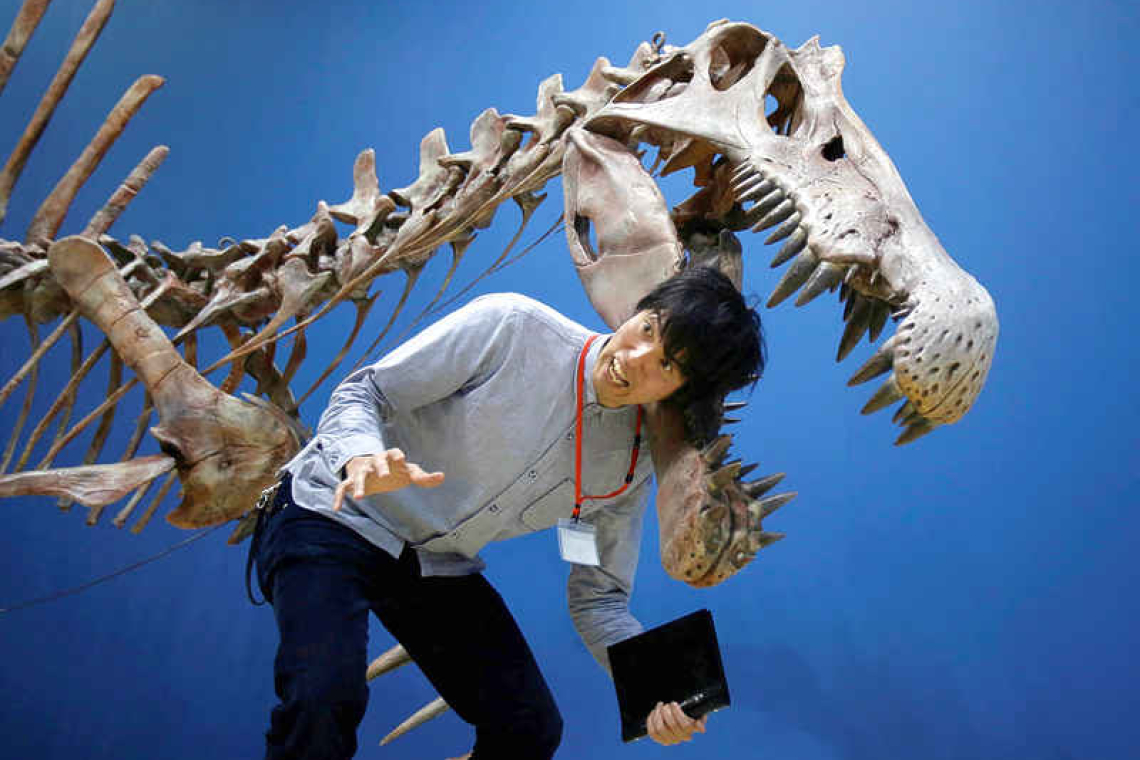LONDON--On Feb. 20, 1824, English naturalist and theologian William Buckland addressed the Geological Society of London, describing an enormous jaw and limb bones unearthed in a slate quarry in the village of Stonesfield near Oxford.
Buckland recognized that these fossils belonged to a huge bygone reptile, and gave it a formal scientific name: Megalosaurus, meaning "great lizard." With that, the first dinosaur was officially recognized, though the actual word dinosaur would not be coined until the 1840s. "It was the beginning of our fascination with dinosaurs," University of Edinburgh paleontologist Steve Brusatte said. "His announcement opened the flood gates and started a fossil rush, and people went out looking for other giant bones in England and beyond." In the intervening 200 years, dinosaur science has flourished, providing insight into what these creatures looked like, how they lived, how they evolved and what doomed them. Dinosaurs trod the planet from about 231 million years ago to 66 million years ago during the Mesozoic Era. Their bird descendants remain with us today. "Our understanding of dinosaurs has changed significantly since the 19th century," said paleontologist Emma Nicholls of the Oxford University Museum of Natural History, home to the Megalosaurus fossils Buckland studied. "Buckland and other gentlemen naturalists of the early 19th century would be stunned at how much we now know about dinosaurs," Brusatte added. Megalosaurus is a case in point. Buckland thought it was a lizard about 66 feet (20 meters) long, walked on four legs and could live on land or in the water. Scientists now know it was not quadrupedal and not a lizard, but belonged to the theropod group comprising meat-eating dinosaurs such as Tyrannosaurus and Spinosaurus and was about 30 feet (9 meters) long. "It scampered around on its hind legs, chasing down its prey, using its clawed hands and toothy jaws to subdue its victims," Brusatte said. Buckland, like others at the time, did not grasp how long ago dinosaurs lived, believing Earth to be only a few thousand years old. Scientists now know Earth is about 4.5 billion years old. Megalosaurus lived about 165 million years ago. "It took several decades for geologists to understand that the Earth was truly old, and that life has evolved over vast stretches of time. Dinosaurs and the other fossils being discovered were a huge impetus in this bombshell change in people's understanding of their place in the world," Brusatte said. English naturalist Richard Owen recognized that fossils found in southern England of Megalosaurus and two other large land-dwelling reptiles, Iguanodon and Hylaeosaurus, formed a common group, calling them "Dinosauria" in an 1841 lecture and a publication the following year. The subsequent discovery of Hadrosaurus and Dryptosaurus fossils in the U.S. state of New Jersey showed that at least some dinosaurs were bipedal, changing the perception that they had resembled reptilian rhinoceroses. Beginning around the 1870s, the first complete large dinosaur skeletons - first in the American West, then in Belgium and elsewhere - demonstrated the distinctive anatomy and diversity of dinosaurs. In the 1960s, the identification of the smallish meat-eating dinosaur Deinonychus shook up dinosaur science, helping inaugurate a research period called the "Dinosaur Renaissance." It showed that dinosaurs could be small and agile. Some were remarkably similar anatomically to early birds like Archaeopteryx, confirming how birds evolved from small, feathered dinosaurs. It also prompted a debate over whether dinosaurs were warm-blooded like birds, contradicting the long-standing conception of them as slow, lumbering and cold-blooded. "In the decades following that, there was increasing work on dinosaur growth, on the use of CT scans, on analytical methods for reconstruction of evolutionary relationships and of biomechanical function, all helping to create a more dynamic and biological view of dinosaurs as living things," said University of Maryland paleontologist Thomas Holtz. Paleontologists put cranial fossils into CT scanners to build digital models of dinosaur brains and ears, gaining better knowledge of dino senses like sight, hearing and smelling. Researchers also now can tell the color of dinosaurs if their skin or feathers are sufficiently well preserved to retain microscopic melanosome bubbles holding pigment in cells. More than 2,000 dinosaur species are now known and paleontology is a vibrant, international science. Remarkable fossil finds are being made in places such as China, Argentina, Brazil, South Africa and Mongolia. "Regarding discoveries about dinosaurs in recent decades, the most important one to my mind is the discovery that at least meat-eating dinosaurs, theropods, had feathers rather than scales and that some had really well-developed feathers on their arms even though they were, for a variety of reasons, incapable of flight," said paleontologist Hans-Dieter Sues of the Smithsonian Institution's National Museum of Natural History in Washington. "Presumably these feathers, which were often colourful, provided insulation for the body and, in at least some species, were used for display," Sues added.







